Cannabis Legal States 2024: A Comprehensive Guide
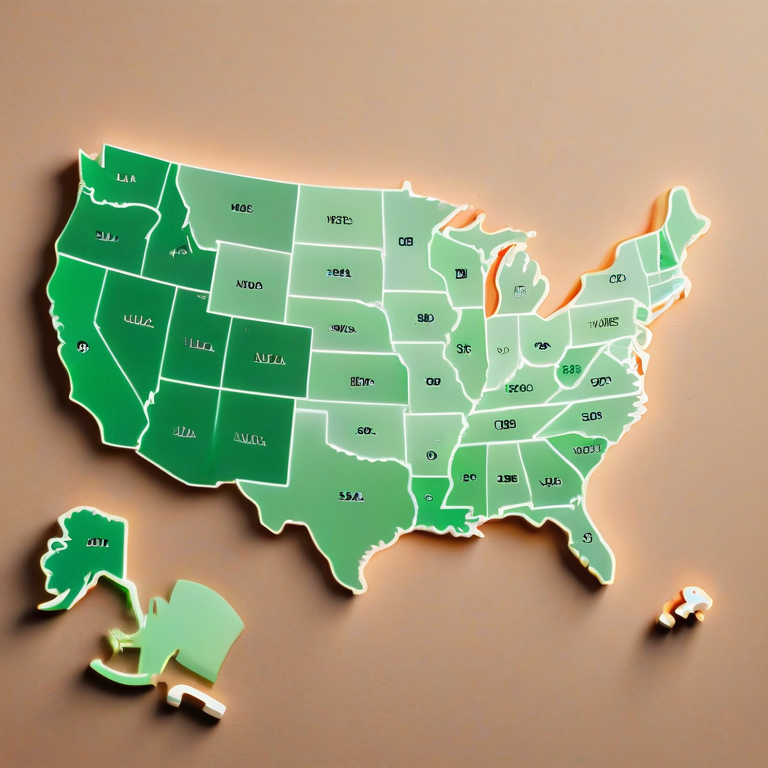
KKey Highlights
- As of 2024, 24 states and Washington D.C. have legalized recreational marijuana, reflecting its growing acceptance across the US.
- Medical marijuana programs are legal in 40 states and Washington D.C., highlighting its recognized therapeutic potential.
- Despite the progress in state legalization, marijuana remains federally illegal, leading to a complex legal landscape.
- The cannabis industry presents growing opportunities for businesses, but navigating federal regulations and banking restrictions remains a significant challenge.
- Public perception of marijuana use is shifting, with increased acceptance and reduced stigma, paving the way for broader legalization efforts.
Introduction

Cannabis legalization is an important topic in the United States. State laws often do not align with federal law. Many states have made cannabis legal for either recreational or medical use, including the use of cannabis oil and other CBD products. However, it is still seen as a Schedule I drug by federal law. This creates a confusing situation for people and businesses involved in the cannabis market. Even with these challenges, more states are choosing to legalize cannabis, including the use of CBD oil, showing that people’s views on marijuana use and CBD products are changing over time.
Overview of Cannabis Legislation in the United States
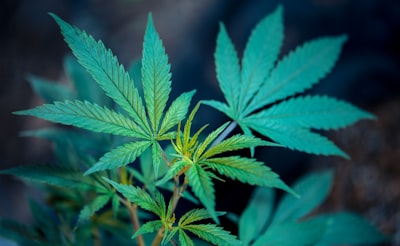
The process of making cannabis legal in the United States has taken time and is quite complex. It has changed a lot based on what people think and what state laws say. Atfirst, the push for medical marijuana aimed to help patients with certain health problems get cannabis, including weight loss for those with HIV/AIDS. Over time, efforts have grown to include its use for fun, or recreational use.
This change has mostly happened because of actions in each state, usually through voting measures and new laws. By 2024, many states in the U.S. allow people to access cannabis for either medical or recreational reasons, including 13 states where medicinal marijuana is legal. It is also legal in all the states where recreational use of weed is permitted, with a total of 25 recreational weed states. In Hawaii, Louisiana, Mississippi, New Hampshire, North Dakota, and the federal District of Columbia, marijuana is allowed for medical use, while it is decriminalized for other uses in certain states. This situation makes things confusing legally and in terms of rules, but as of now, 49 of the 50 states and the federal District of Columbia allow for some form of medical use of cannabis.
The Journey Towards Legalization

The journey to legal cannabis in the United States has been long and complicated. It started with community action and changes to laws. In the 1990s, things began to change quickly. California became the first state to legalize medical marijuana in 1996. This big step led to similar efforts in other states.
Groups like the Marijuana Policy Project helped with these changes. They used many ways to push for cannabis reform. They educated the public, worked with lawmakers, and supported measures that allowed states to legalize marijuana for medical use and later for recreational use.
Thanks to ongoing work and a shift in how people view cannabis, the movement has seen great success. More people accept cannabis now. This, along with proof of its benefits and the push for changes in criminal justice, keeps the effort to legalize it alive across the country.
Understanding Federal vs. State Laws
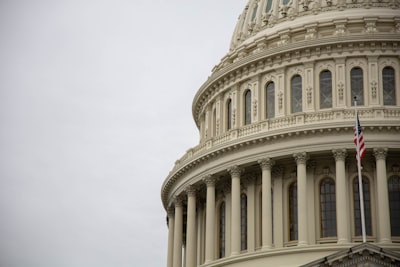
The gap between federal and state cannabis laws in the United States can lead to confusion and legal problems. Many states have made cannabis legal for medical or recreational use. However, the federal government still sees marijuana as a Schedule I drug under the Controlled Substances Act. This means that they think cannabis has a high risk of abuse and no accepted medical use, even though science suggests otherwise.
Because of this difference, people following state laws can still run into issues with federal penalties. The Drug Enforcement Administration (DEA) is in charge of enforcing federal drug laws. They can, in theory, go after people and businesses working with cannabis, even where it’s legal under state laws.
Despite this, the federal government mostly takes a hands-off stance, allowing states to handle their own cannabis laws. Still, the ongoing clash between state and federal laws shows a strong need for federal cannabis reform. This change could help give everyone clear and consistent laws across the US.
States with Full Legalization of Cannabis in 2024

By 2024, almost half of US states will have fully accepted cannabis laws. This change brings a new time of acceptance and rules. Many states are now treating cannabis like alcohol. People in these states can access both recreational and medical cannabis, as well as purchase it legally at licensed dispensaries, as reported by the Pew Research Center. This growth is building a young industry and making a lot of tax money through retail sales of cannabis.
From busy dispensaries in California to new markets in Colorado, these states show different ways to handle legal cannabis. They provide good examples of how to keep things safe, create laws, and help the economy grow. This work points toward more legal changes all over the country.
Recreational and Medical Use Permitted

States that have fully legalized cannabis allow both recreational and medical use of marijuana. This means adults, usually 21 and older, can buy and keep certain amounts of cannabis without needing a medical reason. For instance, in California, adults can possess and use up to 1 ounce of cannabis for recreational use, or up to 8 grams of concentrated cannabis. For medical use with a physician’s prescription, the age drops to 18 and users have higher possession limits for personal use in the privacy of their own home, including up to 16 ounces of marijuana-infused edibles in solid form, 72 ounces of marijuana-infused liquid products, and 7 grams of ounces of cannabis concentrates. Additionally, adults in Missouri can legally grow up to 6 mature plants for personal use. However, it is still illegal to consume marijuana in a public place in Washington state. In Arizona, both recreational and medical use of marijuana is permitted for adults 21 and older. This means that adults can possess up to an ounce of weed or may cultivate up to six plants for personal use. Adults may also transfer up to six plants to another adult as long as there is no monetary exchange and the transfer is not advertised to the public. With the passing of the Illinois Cannabis Regulation and Tax Act, Illinois will also join the list of states where adult marijuana sales are permitted through an act of state legislature.
Medical marijuana programs let patients with specific medical conditions get cannabis with a doctor’s approval. These programs often follow different rules about how much cannabis a person can have, which conditions qualify, and what types of cannabis products are available.
Even with these differences, both recreational and medical cannabis support the growth of the legal marijuana market. They create tax money and job opportunities. Having both options shows a complete approach to cannabis legalization, meeting the needs of patients and adult users.
Impact on Local Economies and Crime Rates
The legalization of cannabis has had clear effects on local economies. It has helped create a strong retail sales market. States that have legalized cannabis have seen many jobs grow in areas like growing, making, moving, and selling cannabis. This new industry has brought more investment, tourism, and economic activity.
Additionally, many studies show that crime rates in places with legal cannabis have either stayed the same or even gone down. While some people worry that legalization might raise certain crime rates, evidence shows that it has not harmed public safety much.
Also, regulating and taxing cannabis has given states a new way to earn money. This money can be used for important public services like education, roads, and healthcare. With its positive effect on the economy and no major social problems, this makes the argument for continuing cannabis reform even stronger.
Regulations and Compliance for Businesses

Navigating the legal cannabis world means businesses must focus on following strict state rules. Cannabis companies, from growers to sellers, need to meet licensing needs, follow operational rules, and maintain quality standards. These rules differ from one state to another, making it harder to run a business in this space. For instance, companies must follow close guidelines on product labeling, packaging, advertising, and keeping youth from accessing cannabis products.
Following the rules also means putting in solid security measures. This includes using surveillance systems, storing products securely, and having safe transportation methods. These steps help prevent theft, keep products safe, and ensure the quality of cannabis products throughout the supply process.
Even with these challenges, following state regulations is very important for cannabis businesses. It allows them to operate legally, keeps consumer trust, and helps build a safe and responsible industry. Not following these rules can lead to serious penalties like losing a license, paying large fines, and facing legal issues.
States with Medical Marijuana Only

While more states are legalizing cannabis fully, some are taking it slow. These states only allow cannabis for medical purposes. They have created medical marijuana programs. This lets patients with certain medical conditions use cannabis if a doctor says it’s okay.
This method shows that they see the possible health benefits of cannabis but also want to control recreational use. Patients in these states can often find different cannabis products. These include oils, edibles, and creams that meet their unique needs.
Conditions Qualifying for Medical Use
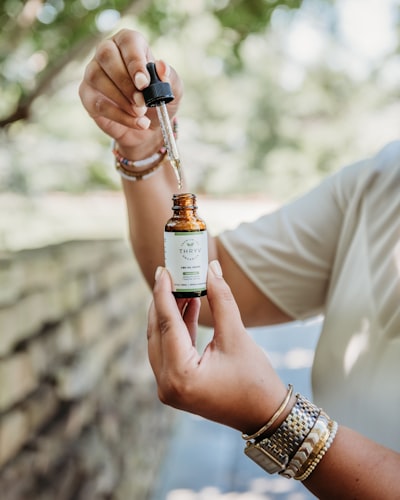
Medical marijuana programs in the United States create a list of conditions that allow patients to get a medical cannabis card. Common conditions include chronic pain, serious diseases like cancer, multiple sclerosis, and HIV/AIDS. These are conditions where medical cannabis may help.
The qualifying conditions for medical marijuana can be very different across states. Some states have strict lists, while others include more conditions. This shows how our understanding of medical cannabis is changing and expanding.
Patients with these qualifying conditions often find that medical cannabis helps relieve symptoms. This can include pain, nausea, muscle spasms, and anxiety. By using medical marijuana, patients can find a different way to treat their symptoms and improve their quality of life with serious conditions.
Process of Obtaining a Medical Marijuana Card
Getting a medical marijuana card requires following specific rules for each state. Usually, patients start by setting up a meeting with a doctor who is registered with the state’s medical marijuana program. The doctor will look at the patient’s medical background and current health to see if they qualify for medical marijuana use.
If the doctor thinks medical cannabis can help the patient, they will provide a written recommendation. This document needs to be sent with the patient’s application for the medical marijuana card to the state’s health department or agency that manages this.
Once the application gets approved, the patient will get their medical marijuana card. This card lets them buy and keep a set amount of medical cannabis from licensed dispensaries in the state. Normally, the card must be renewed every year and may have other rules specific to the state.
Differences in State-by-State Regulations
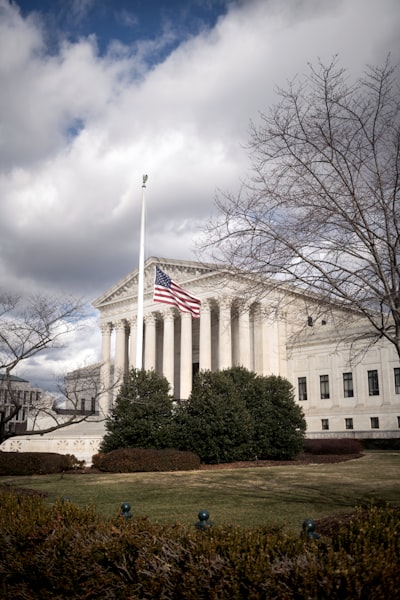
The rules for marijuana legalization in the United States, even for medical use, vary a lot from state to state. Each state with a medical marijuana program has different regulations about growing, sharing, how much you can have, and what conditions qualify you for use. These differences show how marijuana legalization is not consistent, and there is no central set of federal rules.
For example, some states let people grow a few marijuana plants at home for their medical needs, while others do not allow this at all. In the same way, the amount of medical marijuana you can possess changes a lot. Some states let you have just a few ounces, while others allow several pounds.
These differences make things harder for patients and businesses that operate in more than one state, such as those in West Virginia. It shows the need for more uniform rules and clearer medical marijuana laws. As more people support marijuana legalization, it’s crucial to create similar state rules in places like West Virginia. This will help ensure that patients can get access and make business easier across state lines.
States Where Cannabis Remains Illegal

Even though many states in the United States are moving towards legalizing cannabis, some states still do not allow it. These states believe that marijuana is harmful. They think that legalizing it could hurt their communities. Their worries include public safety, crime rates, and risks related to cannabis use.
However, as more people support legalization and nearby states enjoy the benefits, these concerns are being challenged. The ongoing discussions about cannabis in states where it is illegal show how opinions are changing nationwide. It also highlights the challenges faced when trying to include cannabis in American society.
Ongoing Debates and Legal Battles

In states where cannabis is still illegal, there are ongoing discussions and legal fights about its legalization. Advocacy groups, patients, and people who support legal access keep pushing for changes. They highlight the benefits of medical cannabis, the need for criminal justice reform, and the economic chances that legalizing marijuana can bring, including in South Dakota where activists are fighting for both medical and recreational cannabis legalization.
They frequently challenge current laws in court. They argue these laws go against individual rights and do not consider what we now know about cannabis from science and medicine. On the other hand, those against legalization often express moral and ethical concerns. They say that cannabis can be harmful and bad for society.
These legal fights show how complicated cannabis laws can be and reveal the tension between state and federal rules. As the discussion moves forward, the results of these legal actions could change the path of marijuana legalization in these states and might have wider effects on federal laws as well.
Federal Implications and Penalties
The disagreement between state and federal marijuana laws creates a tricky situation, even in states where cannabis is not allowed. Federal law still views marijuana as a Schedule I controlled substance. This means there are strict punishments, no matter what a state decides about legalization. If you possess, grow, distribute, or sell cannabis in states like North Carolina or South Carolina, you could face heavy fines and jail time under federal law.
The Drug Enforcement Administration (DEA) can enforce these federal laws, even if your state allows these activities. Although the federal government has relaxed its approach in recent years, many people still worry about being prosecuted. This is especially true for businesses in the cannabis industry.
This situation shows the need for clear federal reform on cannabis laws. Such changes could remove these conflicts and provide better guidance. Until that happens, the federal risks and consequences related to cannabis remain confusing for everyone involved.
The Economic Impact of Cannabis Legalization

The wave of cannabis legalization in the United States has created big economic changes. What used to be an underground market is now a growing industry. This change has led to new jobs and more tax income, benefiting many areas in the economy.
State governments can now collect a good amount of tax from selling both recreational and medical cannabis. This money helps fund public services and build infrastructure. Legalization has also opened doors for new ideas and investments, leading to new businesses, products, and ways to use cannabis.
Job Creation and Market Growth
The cannabis industry is growing fast. It is a big source of new jobs and offers many chances to work. Jobs in this field include growing, processing, selling, and marketing cannabis.
As more states make cannabis legal, the need for skilled workers is increasing. Dispensaries, cultivation areas, testing labs, and other businesses always look for qualified people to fill jobs. This helps the economy grow and brings more variety to the job market.
The rise in jobs is closely tied to the growth of the cannabis market. As more people want to buy cannabis and legal markets grow, there is more investment, new products, and competition. This all helps to create even more jobs and expands the economy.
Tax Revenues and Allocation
One big effect of cannabis legalization is the large amount of tax money collected by state governments. This new money gives states a chance to improve their budgets and provide more public services.
States have created different tax plans for cannabis sales. These can include excise taxes that manufacturers and distributors pay, and sales taxes that customers pay at stores. Some of this tax money goes to important areas like education, healthcare, programs for treating substance abuse, and fixing up infrastructure.
How states spend cannabis tax revenue depends on what they need the most. Still, all legalized states share the fact that this extra money helps fund important services. It adds to traditional earnings and helps communities grow stronger.
Social and Health Implications
The legalization of cannabis has led to important talks about its effects on society and health. This has made people want to study and discuss how it impacts individuals and communities. As more people have access to legal cannabis, it is important to understand the risks and benefits. This knowledge will help make smart decisions about laws and safe use.
Some research shows that using too much cannabis can be risky, especially for young people. However, other studies point out that it can help with managing long-term pain, anxiety, and some health issues. The effects of legalization on crime rates, driving safety, and how people view cannabis are still being studied and discussed.
Research on Cannabis and Public Health
Cannabis research has grown a lot in recent years. This is due to more places allowing its use. Researchers and scientists are looking into how cannabis affects health. They want to understand both the good and bad effects on the brain, body, and general well-being.
Studies are being done to see how well cannabis can treat different health issues. This includes conditions like chronic pain, epilepsy, multiple sclerosis, and post-traumatic stress disorder. The goal is to find the best doses, ways to take it, and possible side effects of medical cannabis.
Public health officials are also looking into the risks of using cannabis, especially for people who might be more at risk. They are studying how cannabis affects brain function, mental health, and lung health, with a focus on young people and teens. This research is important for developing health policies and encouraging safe cannabis use.
Changing Social Perceptions and Stigma
As cannabis legalization becomes more popular, the way people think about marijuana is changing a lot. The negative feelings some had about cannabis are getting weaker. More people now see it as harmless, much like alcohol or tobacco.
This change is especially clear among younger people who grew up when marijuana became more accepted and less illegal. You can also see this acceptance in movies, TV shows, and honest discussions about what cannabis can do, both good and bad.
Because people are changing how they feel about cannabis, it’s easier to talk about cannabis rules, research, and safe use. As the negative views go away, there is a chance for better education, ways to reduce risks, and a clearer understanding of marijuana use in our society.
Legal Challenges and Court Cases
The progress in cannabis legalization is clear, but the legal situation is still complicated. There are ongoing court cases that will impact the future of the industry. These cases often focus on state versus federal rules, interstate trade, and unclear laws.
A major legal issue is the conflict between cannabis businesses that follow state laws and federal banking rules. Since cannabis is still illegal at the federal level, many banks do not want to work with cannabis companies. They fear facing federal legal action. This lack of access to regular banking services makes it hard for the industry to grow and be stable.
Key Legal Battles Shaping Cannabis Law
The change in cannabis law in the United States has been shaped by important legal fights and court cases. These cases often deal with key issues. They look at the power of the federal government, states’ rights to control cannabis use, and the limits of marijuana laws.
A significant case was when Colorado’s new laws on recreational cannabis conflicted with the federal law, known as the Controlled Substances Act. In Gonzalez v. Raich (2005), the Supreme Court ruled that the federal government can regulate cannabis because of the Commerce Clause, even in states that allow it.
But later legal fights have focused on how the federal government enforces these laws and how they apply to the changing world of cannabis. These cases, often led by advocacy groups, patients, and businesses, try to clear up confusing laws and push for better access and regulation of cannabis.
The Role of the Supreme Court
The Supreme Court is very important in deciding how cannabis laws will change in the United States. Its decisions can affect both state and federal law. As the highest court, its views on the Constitution and federal laws create rules that lower courts must follow.
So far, the Supreme Court has not made a clear ruling on cannabis legalization. It has mostly let Congress decide how to change federal law. Still, the court’s decisions about medical marijuana and federal enforcement have greatly changed the legal situation.
As more states legalize cannabis and new legal cases come to the Supreme Court, its decisions will be key for the future of the industry. The court will help define the balance between state and federal powers, the possibilities for trade between states, and the future of cannabis laws in the United States.
The Future of Cannabis Legislation
The future of cannabis laws in the United States looks both hopeful and unclear. Ongoing discussions and changing political situations are influencing its path. Full federal legalization is still out of reach, but many states are moving forward with new efforts.
More people are accepting cannabis. There is also more proof of its benefits and a strong wish for changes in criminal justice. This helps push for further legalization. Still, there are opponents. Some people are worried about public health, access for young people, and possible social issues.
Pending Bills and State Initiatives
Across the United States, there are many bills and state plans that show ongoing efforts to change cannabis laws and make access easier. Advocates and lawmakers are looking at different ways to do this. Some are making small updates to current laws, while others are proposing full legalization.
Some states want to expand their medical marijuana programs. This could mean adding more qualifying conditions or raising possession limits. Other states are working on legalizing adult use of cannabis through new laws or voting on it directly.
These efforts show how fast cannabis laws are changing and how passionate the discussions around them are. The results of these bills and state plans will have a big effect on how people access cannabis, how the industry grows, and the chances for federal changes.
Predictions for Federal Legalization Efforts
Predicting when cannabis will become legal at the federal level in the United States is still tricky. Many things affect this, like politics, how people feel about it, and what important groups, like the Justice Department, do.
Right now, full legalization seems far away. But, more people from different political parties support small changes. These changes could include adjusting how cannabis is scheduled, allowing banks to help cannabis businesses, and making it easier to study cannabis.
The Justice Department has been more open to state-legal cannabis businesses under the Biden administration. Still, this could change if a new administration comes in or if political issues change. In the end, for federal legalization to happen, there will need to be ongoing public demand, action from Congress, and a good ruling from the Supreme Court. Until that happens, states will keep shaping the cannabis policy.
Cannabis Tourism in Legal States
Cannabis tourism has become a growing industry in states where it is legal. Many visitors are excited to go to places where using cannabis is accepted. This type of tourism includes visits to stores that sell cannabis, places to stay that are cannabis-friendly, lounges where you can use cannabis, and dining experiences that include cannabis-infused dishes.
States like Colorado and California have seen a rise in tourists since cannabis was legalized. Many people are curious and want to try legal cannabis. This increase in visitors has helped local economies by bringing in money for businesses and more tax income for state governments.
Destinations Popular for Cannabis Tourism
Cannabis tourism is becoming more popular. Some places are now great spots for people who want to enjoy cannabis-friendly vacations. States like Colorado, California, and Nevada, which allow both recreational and medical cannabis, attract many tourists.
These states offer many cannabis experiences. You can visit high-tech dispensaries, tour growing facilities, go to cannabis festivals, and enjoy meals with cannabis-infused dishes. Many hotels in these areas focus on cannabis users. They have features like smoking balconies, vaporizers, and special welcoming gifts related to cannabis.
As cannabis tourism grows, places are expanding what they offer to draw in more visitors. You can find cool options like cannabis-infused spa treatments, educational classes, and guided tours. The industry is always changing to create unique and fun experiences for tourists.
Legal Considerations for Tourists
While cannabis tourism offers fun chances for travelers and businesses, tourists should know the legal rules and risks of using cannabis in a new area. First, travelers need to understand the cannabis laws where they are going.
Each state has different rules about how much cannabis you can have, where you can use it, and the legal age for use. For example, a legal amount of cannabis in one state might get you in trouble in another. Also, tourists need to be careful about where they use cannabis since using it in public is often not allowed.
It is very important to be cautious when buying cannabis products. Always buy from legal and trusted dispensaries. By following local laws, tourists can have a safe and responsible cannabis tourism experience.
Business Opportunities in the Cannabis Industry
The growing cannabis industry offers many chances for business owners and investors. There are many areas to explore, like growing, making, selling, and support services. The fast growth and changing laws make it a good time for new startups and established businesses to join in.
As more states allow cannabis, new markets are being formed. At the same time, the demand for cannabis products is increasing. This demand allows entrepreneurs to start businesses like dispensaries, growing facilities, testing labs, and companies that make cannabis-infused foods, drinks, and creams.
Emerging Markets and Niche Sectors
The cannabis industry is always changing. This leads to new markets and special sectors that focus on what consumers want. One area that is growing fast is the cannabis edibles market. This includes many different products like gummies, chocolates, baked goods, and drinks with cannabis extracts.
Another new market is cannabis topicals. This focuses on items like lotions, balms, and salves that have CBD or THC in them. These products are useful for pain relief and skincare. They appeal to people looking for different ways to manage pain. They also interest those wanting the healing benefits of cannabis without feeling high.
As the industry grows, we will likely see more specialized and niche markets. This change will be driven by consumer wants, new technology, and the creation of unique cannabis products and ways to use them. This steady innovation keeps the cannabis industry lively and brings new business chances.
Investment and Financial Analysis
Investing in the cannabis industry needs careful thought, strong research, and understanding the market’s special challenges and rewards. This industry is new and changes quickly. It shows both risks and chances for investors.
One big challenge is that there is not much access to normal banking services. The rules can also be very complicated and different depending on the state. Investors have to deal with unstable cannabis stock prices and changes in the market.
Even with these challenges, the cannabis industry has a lot of growth potential. Legalization is moving forward, and more people want cannabis products. Investors who do their financial homework, spread out their investments, and handle risks in a smart way can find good opportunities in this growing market.
Education and Advocacy
Public education and advocacy are very important for the future of cannabis laws and a responsible cannabis industry. Groups that focus on cannabis education and reform work hard to clear up misunderstandings, support useful policies, and make sure the right information gets to lawmakers and the public.
These groups mainly aim to lower the harm linked to cannabis use, encourage responsible usage habits, and promote reasonable rules that protect public health and individual rights. Through teaching efforts, reaching out to communities, and pushing for laws, they work to build a society that benefits from cannabis while reducing the risks.
Resources for Legal Education on Cannabis
Navigating cannabis law can be tough because it is always changing. To do this, you need good information that is correct and current. Luckily, there are many resources that provide education about cannabis laws for different audiences, such as people, businesses, and policymakers.
Trustworthy legal groups often create detailed guides and helpful materials. These explain the laws for cannabis that vary by state, the steps to get licenses, how to comply with the laws, and important court decisions. These resources give useful information about the rules for growing, making, selling, and retailing cannabis.
Other than legal groups, government agencies, schools, and industry groups also offer workshops, seminars, and online classes. These educational events help people and businesses learn about the most recent changes in the law, best practices, and ways to stay compliant.
Leading Advocacy Groups and Their Goals
Numerous groups in the United States focus on changing cannabis laws. Each group has its own goals and ways to work towards them.
Some groups aim to influence lawmakers and push for friendly cannabis laws on both state and federal levels.
Others focus on educating the public and promoting responsible use. They share useful information about cannabis and advocate for health and safety. These groups often reach out to communities, offering help to those affected by cannabis laws.
Many advocacy groups also take legal action. They challenge current cannabis laws in court and support making it easier to access cannabis and erase past marijuana convictions.
Through these efforts, these groups are important in discussing cannabis and working towards fairer cannabis laws in society.
Environmental Impact of Cannabis Cultivation
The rising demand for cannabis has brought up worries about how it affects the environment. This includes concerns about energy use, how much water it needs, and deforestation from big farming operations. As the industry expands, it is important to deal with these issues and encourage sustainable practices.
Growing cannabis indoors can use a lot of energy because of the need for artificial light, air flow, and climate control systems. On the other hand, outdoor growing is usually seen as better for the environment, but it can still affect water supply and local ecosystems if it is not managed carefully.
Sustainable Practices in the Industry
Many cannabis growers are realizing how important it is to care for the environment. They are starting to use better practices to lessen their impact on nature. These practices cover many parts of the growing process, including saving water, using less energy, lowering waste, and keeping the soil healthy.
One key practice is using water-saving methods, like drip irrigation and collecting rainwater, which helps use less water. Growers are also looking into clean energy options, such as solar and wind power, to rely less on fossil fuels and cut down their carbon footprint.
Moreover, lots of growers are choosing to go organic. They avoid using chemical pesticides and fertilizers. This helps keep the soil healthy, stops water from getting polluted, and supports different kinds of plants and animals. By adopting these sustainable practices, the cannabis industry can work to limit its harm to the environment while still keeping high quality and good yields.
Challenges and Solutions for Growers
Cannabis growers deal with special problems when trying to grow in a sustainable way. They often need to balance caring for the environment with making money. A big challenge is the high cost that comes upfront when using sustainable technology. This includes things like energy-saving lights and water-saving irrigation systems.
Another problem is the lack of clear rules and standards for sustainable cannabis farming. This inconsistency makes it hard for growers to meet the best practices and what consumers expect from green products.
Even with these issues, there are some solutions to help growers. Government help, grants, and tax breaks can make it easier to afford sustainable technologies and methods. There are also chances for growers to work together and share ideas. This can help them adopt the best practices and build a lasting culture of sustainability in the cannabis industry.
Innovation in Cannabis Products and Consumption Methods
The cannabis industry is full of new ideas. It keeps changing and growing beyond just using traditional flower. This change is great for more and more people who are interested in cannabis.
Today, you can find many helpful products. There are easy-to-use vape pens, accurately measured edibles, and quick-acting strips that dissolve under the tongue. All these products aim to give a better experience to users. At the same time, companies are also looking into better extraction methods. They are creating new cannabis strains and improving ways to deliver cannabis to make it more effective and easier to use.
Technological Advances in Cultivation and Processing
Technological advances are changing almost every part of the cannabis industry. This includes growing, processing, using, and selling cannabis. New farming methods use sensors, data, and machines to improve how cannabis plants grow. These methods help make the growing conditions better. They aim to increase the amount and quality of cannabis plants.
In processing cannabis, new extraction techniques like supercritical CO2 extraction help separate certain cannabinoids and terpenes. This results in powerful concentrates and unique cannabis products that fit specific needs and likes.
These new technologies also help in stores and with customer experiences. Online sites and apps give customers easy access to many cannabis products, delivery options, and learning materials. This is changing the way people connect with the cannabis industry.
Trends in Consumer Preferences
Consumer preferences in the cannabis market are always changing. This change shapes market trends and drives the development of products. Traditional flower use is still popular, but more people are looking for other ways to use cannabis. These include vape pens, edibles, and concentrates. These options offer convenience, discretion, and precise dosing.
There is more demand for products with CBD. Many consumers want non-intoxicating choices to help with pain, anxiety, and overall well-being. Interest in minor cannabinoids like CBG and CBN is also growing. Research is showing their possible health benefits.
These changing preferences lead to more product options. We are seeing new cannabis products like low-dose edibles, nano-infused drinks, and creams for specific health issues. As the industry grows and people learn more, we can expect even more new and specialized cannabis products that meet the needs of cannabis fans.
Legal Risks and Compliance for Cannabis Businesses
Running a cannabis business can be very profitable. However, it also has legal risks and challenges with rules that must be followed. Dealing with these complicated rules can be tough.
Navigating State and Federal Regulations
Navigating the rules for cannabis use in legal states means knowing the complex laws at both the state and federal levels. State laws can differ a lot. Some states allow recreational use, while others only allow medical use. It is important to understand the specific laws in each state, like in New York, New Mexico, and Rhode Island. Businesses in the cannabis industry also need to follow federal law. Even though cannabis is still illegal federally, businesses must comply. Keeping up with the changing legal situation, especially in the District of Columbia, is important to know about new updates.
Best Practices for Compliance and Licensing
To follow the changing cannabis rules, businesses need to understand state and federal laws well. It’s important to set up good tracking systems for inventory and sales. Regular checks and records of all sales help keep things legal. Getting the right licenses and permits from the start is key to avoiding legal issues. Businesses should keep up with any new laws and change their practices when needed. Building a culture of following rules in the workplace through regular training helps everyone stay committed to the law.
Impact on Criminal Justice and Reform
The legal use of cannabis in different states has greatly changed the way we view criminal justice and reform. Some new laws aim to remove penalties for past marijuana-related crimes and help clear those records. This promotes fairness and social justice. Instead of punishing people, the focus is now on helping and supporting those who had issues with marijuana laws before. These changes not only ease the load on our legal system but also try to fix the unfair effects of cannabis laws on some communities. This helps create a fairer society for everyone.
Decriminalization and Its Effects
Decriminalizing cannabis means making penalties for possession less harsh. The goal is to focus on treatment instead of putting people in jail. This change is intended to lessen the load on the criminal justice system and address issues of social fairness. States like New York and New Jersey want to reduce the unfair effects of possession laws on communities that are often overlooked, especially for small amounts of marijuana. When these laws are less enforced, it can change how people see cannabis use and encourage more policy changes. However, it is important to note that in most of these states, repeat offenses, sales, distribution, or possession of large amounts of marijuana can still result in jail time and a maximum fine. States like New Mexico and Rhode Island are adopting this method, realizing that a kinder and fairer view of cannabis use is needed. Decriminalization helps move toward a more understanding and science-based approach to drug policy.
Expungement Programs and Social Equity Initiatives
In 2024, the legal use of cannabis is changing a lot. Expungement programs and social equity efforts are very important. These programs try to fix the unfairness caused by strict cannabis laws. They mainly affect marginalized communities.
Expungement programs help clear past cannabis convictions from people’s records. This gives them a fresh start and fair chances. Social equity measures aim to include everyone in the legal cannabis business. They offer help and resources to those who were hit hardest by old drug laws.
By adding these programs, states want to build a fair and equal system for the growing cannabis market.
International Perspectives on Cannabis Legalization
As more countries legalize cannabis, we see different views on the topic. Each country has its own laws around recreational and medical use. For example, Canada and Uruguay have completely legalized recreational marijuana. In contrast, Spain and the Netherlands mainly focus on decriminalizing it. There is also a wider trend now toward accepting cannabis for medical purposes. By looking at these different perspectives, we can learn how to create better regulations and policies in the future.
Comparisons with Legal Frameworks Abroad
The rules around cannabis are changing all over the world. Looking at how different countries handle cannabis laws can help us understand better. Places like the Netherlands, Uruguay, and Canada have their own ways of dealing with recreational and medical cannabis use. For instance, the Netherlands uses a “tolerance policy,” while Canada has legalized it at the national level. These different methods show us various approaches. By learning from these international views, lawmakers can create better rules. They should think about issues like taxes, how cannabis is sold, and limits on how much people can use. Studying laws from other countries can help states improve their own cannabis policies.
Global Shifts in Drug Policy
As the world changes, we see big shifts in how countries handle drug laws. Many nations are looking at their rules about drugs like cannabis, becoming more relaxed and open. The global community is starting to recognize the benefits of cannabis use, both for medical reasons and for fun. This movement can be seen in different places around the world. Some countries have made cannabis legal for recreational use, while others are working on medical marijuana legalization. These new laws show a change towards understanding drug policies better and accepting cannabis as a real medicine.
Conclusion
The landscape for Cannabis Legal States in 2024 is bright and changing. Rules at the state and federal levels connect, affecting how businesses follow the law and get licenses. There is also change in criminal justice. Programs are in place to clear past marijuana charges and help with fairness in society. Looking at other countries shows how attitudes towards drugs are changing worldwide. States like Washington and Colorado are seeing more use of both recreational and medical cannabis. Meanwhile, New York and New Mexico are allowing a wider range of cannabis products. The future looks good with more plans for personal and medical use. This shows a significant shift towards a more open and organized cannabis industry.
Frequently Asked Questions
What Are the Requirements to Purchase Cannabis in Legal States?
To buy cannabis in states where it’s legal, you usually need to be of legal age. You also need to show a valid ID. Each state has its own limits on how much you can buy. In some states, you might need a medical card to visit medical dispensaries.
Can Non-Residents Purchase Cannabis in States Where It’s Legal?
Out-of-state visitors can buy cannabis in legal states, but there are rules to follow. You usually need to show a valid ID that proves you are 21 or older. It’s important to check state laws for how much you can buy. Also, remember that the laws about using cannabis might be different from the buying laws.
How Does Cannabis Legalization Affect Employment Drug Testing?
Employment drug testing may change after cannabis legalization. Some employers are rethinking their policies because of new laws. They might adjust their tests or concentrate on whether someone is impaired instead of when they last used drugs. It is important for both employers and employees to understand these changes.
What’s the Future for States Still Opposing Cannabis Legalization?
The future is unclear for states that still do not support cannabis legalization. Public views are changing, and there are economic benefits that might change opinions in the future. Still, strong beliefs and federal rules are big obstacles to widespread acceptance.
https://www.mpp.org/states/massachusetts
https://www.mpp.org/states/pennsylvania
https://www.mpp.org/states/kansas
https://www.mpp.org/states/nevada
https://www.mpp.org/states/wyoming
https://www.mpp.org/states/georgia
https://www.mpp.org/states/minnesota
https://www.mpp.org/states/north-carolina
https://www.mpp.org/states/vermont
https://www.mpp.org/states/alabama
https://www.mpp.org/states/hawaii
https://www.mpp.org/issues/medical-marijuana/overview-of-states-flawed-high-cbd-laws
https://norml.org/news/2018/05/17/kansas-new-law-excludes-cbd-from-the-criminal-codehttps://norml.org/laws/medical-laws/new-jersey-medical-marijuana-law/